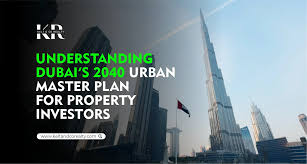Now Reading: Green Buildings in Dubai: Leading the Sustainable Real Estate Movement in 2025
-
01
Green Buildings in Dubai: Leading the Sustainable Real Estate Movement in 2025
Green Buildings in Dubai: Leading the Sustainable Real Estate Movement in 2025
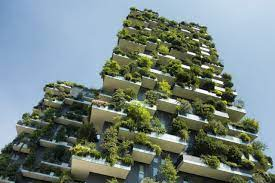
Table of Contents
Dubai’s real estate market in 2025 is at the forefront of the sustainable real estate movement, with green buildings driving environmental responsibility, cost efficiency, and investor appeal. Aligned with UAE Net Zero 2050 and supported by robust R&D tax incentives (30–50% refundable credits starting 2026), Dubai’s green buildings integrate smart technology, renewable energy, and eco-friendly materials to meet soaring demand from eco-conscious high-net-worth individuals (HNWIs), expatriates, and investors.
Building on prior analyses of luxury villas, emerging neighborhoods, and UAE’s tax framework, this response explores how green buildings in Dubai lead the sustainable real estate movement in 2025, highlighting key projects, benefits, and investment opportunities, with comparisons to Sharjah and Ajman.
Drivers of Green Buildings in Dubai (2025)
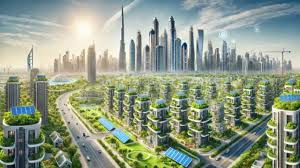
- Regulatory Framework and Sustainability Goals:
- Context: Dubai’s Green Building Regulations (since 2011) and Al Sa’fat Rating System mandate energy-efficient designs, while UAE Net Zero 2050 targets carbon neutrality, per Sustainable Living Developments.
- Impact: Over 70% of new developments in 2025 are LEED-certified or equivalent, reducing emissions by 30–40%, per Khaleej Times.
- Why It Drives Demand: Compliance ensures market competitiveness, akin to Sharjah’s Sharjah Sustainable City, per Sharjah’s Freehold Zones.
- Investor and Tenant Demand:
- Context: 72,500 HNWIs and 88% expatriate population prioritize sustainability, with 65% of buyers favoring green properties, per Henley & Partners and Luxury Villas in Dubai.
- Impact: Green buildings command 10–15% price premiums and 6–8% rental yields, driven by demand in Tilal Al Ghaf and Dubai South, per Top 10 Emerging Neighborhoods.
- Why It Drives Demand: Eco-conscious buyers, similar to those in Ajman’s Al Ameera Village, seek long-term value.
- R&D Tax Incentives:
- Context: 30–50% refundable credits on R&D expenditures (effective 2026) support green tech innovation, per R&D Tax Incentives in the UAE.
- Impact: Developers like Emaar and Damac invest in AI-driven systems and solar panels, cutting project costs by 30%, per Mobility Finance.
- Why It Drives Demand: Enhances ROI for sustainable projects, mirroring Sharjah’s Aljada.
- Infrastructure and Smart Technology:
- Context: Dubai’s Smart City Strategy integrates IoT, 5G, and renewable energy in projects like Dubai Creek Harbour, per Impact of Infrastructure Projects.
- Impact: Green buildings achieve 20–25% utility savings, boosting appeal in Damac Lagoons, similar to Ajman’s Al Zorah smart initiatives.
- Why It Drives Demand: Technology-driven efficiency attracts investors, per Top 10 Emerging Neighborhoods.
- FDI and Economic Growth:
- Context: AED 114 billion in FDI (H1 2024) and 4.5% GDP growth fuel sustainable real estate, per Role of Foreign Investment.
- Impact: Global developers target LEED Gold projects, with 36% of properties selling above asking price, per Luxury Villas in Dubai.
- Why It Drives Demand: Aligns with global ESG trends, akin to Sharjah’s 140% FDI surge.
Key Green Building Projects in Dubai (2025)
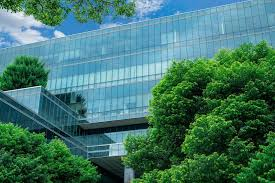
- Tilal Al Ghaf:
- Details: Majid Al Futtaim’s eco-friendly community with villas (AED 3–10 million, 5–7% ROI) and a central lagoon, per Luxury Villas in Dubai.
- Green Features: Solar panels, AI energy systems, and LEED Gold certification, saving 20% on utilities.
- Investment Appeal: 6–8% price growth, Golden Visa eligibility, and high tenant demand, similar to Sharjah’s Sharjah Sustainable City.
- Key Project: Harmony integrates vertical farming and water recycling.
- Dubai South:
- Details: Logistics and residential hub near Al Maktoum Airport, offering apartments (AED 600,000–900,000, 7–8% ROI) and villas (AED 1.2–1.8 million, 6–7% ROI), per Top 10 Emerging Neighborhoods.
- Green Features: Solar-powered buildings, IoT waste management, and 30% energy reduction, per Khaleej Times.
- Investment Appeal: 8–10% price growth, free zone tax exemptions, and metro connectivity, akin to Ajman’s Al Helio 2.
- Key Project: Residential City uses green concrete and smart grids.
- Damac Lagoons:
- Details: Mediterranean-themed community with villas (AED 2–7 million, 5–6% ROI), per Luxury Villas in Dubai.
- Green Features: Rainwater harvesting, energy-efficient designs, and Al Sa’fat Platinum rating, saving 15–20% utilities.
- Investment Appeal: 6–8% price growth, 8–10% short-term rental yields, and tourist appeal, similar to Sharjah’s Maryam Island.
- Key Project: Portofino features AI-driven cooling systems.
- Dubai Creek Harbour:
- Details: Emaar’s waterfront project with apartments (AED 800,000–1.2 million, 6–7% ROI) and townhouses (AED 1.8–2.5 million, 5–6% ROI), per Top 10 Emerging Neighborhoods.
- Green Features: Solar rooftops, smart irrigation, and 40% reduced emissions, per Emaar Sustainability Report.
- Investment Appeal: 7–9% price growth, cultural hub status, and affordability, mirroring Sharjah’s Aljada.
- Key Project: Creek Palace uses recycled materials and IoT sensors.
- Sustainable City Dubai:
- Details: Net-zero community with villas (AED 2–5 million, 6–8% ROI) and apartments (AED 800,000–1.5 million, 7–9% ROI), per Sustainable Living Developments.
- Green Features: 100% solar-powered, zero waste, and car-free zones, achieving 50% lower carbon footprint.
- Investment Appeal: 6–8% price growth, 20–25% cost savings, and expat demand, akin to Ajman’s Al Ameera Village.
- Key Project: Phase 3 expands with vertical farming and EV charging.
Benefits of Green Buildings
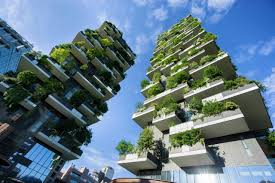
- Cost Efficiency:
- 20–25% savings on utilities through solar energy and smart systems, e.g., Tilal Al Ghaf villas save AED 50,000 annually, per Luxury Villas in Dubai.
- 30–50% R&D tax credits (2026) reduce innovation costs, per R&D Tax Incentives in the UAE.
- Higher ROI and Value:
- 6–9% rental yields and 6–10% price growth in green projects like Dubai South, outpacing non-green properties, per Top 10 Emerging Neighborhoods.
- 10–15% price premiums for LEED-certified buildings, similar to Sharjah’s Sharjah Sustainable City.
- Environmental Impact:
- 30–50% reduction in energy use and emissions, supporting UAE Net Zero 2050, per Khaleej Times.
- Enhances Dubai’s global sustainability ranking, akin to Ajman’s Al Zorah eco-focus.
- Market Appeal:
- Attracts 65% of buyers prioritizing ESG, boosting occupancy in Damac Lagoons and Sustainable City Dubai, per Luxury Villas in Dubai.
- Aligns with global trends, mirroring Sharjah’s Aljada smart city appeal.
Investment Opportunities
- Luxury Green Villas:
- Areas: Tilal Al Ghaf, Damac Lagoons, Sustainable City Dubai.
- Why Invest: 5–7% yields, 6–8% price growth, and Golden Visa eligibility (>AED 2 million), per Luxury Villas in Dubai.
- Action: Buy off-plan in Harmony or Portofino via Majid Al Futtaim or Damac, using Bayut.
- Affordable Green Housing:
- Areas: Dubai South, Sustainable City Dubai.
- Why Invest: 7–9% yields, 8–10% growth, and free zone exemptions, akin to Ajman’s Al Helio 2 (10% ROI), per Affordable Housing in Ajman.
- Action: Invest in Residential City apartments via Emaar, leveraging dubizzle.
- Commercial Green Spaces:
- Areas: Dubai Creek Harbour, Dubai South.
- Why Invest: 5–7% yields, 7–9% growth, and SME demand, similar to Sharjah’s Sajja, per Impact of Infrastructure Projects.
- Action: Target retail units in Creek Palace via Emaar, using PHOREE Real Estate.
- Short-Term Rentals:
- Areas: Damac Lagoons, Sustainable City Dubai.
- Why Invest: 8–10% yields from tourism (20.5 million visitors, 2024), per Luxury Villas in Dubai.
- Action: Purchase villas for Airbnb in Portofino, via Damac.
Challenges and Considerations
- High Initial Costs: Green tech (e.g., solar panels) raises development costs by 5–10%, though offset by R&D credits, per R&D Tax Incentives in the UAE.
- Regulatory Compliance: Al Sa’fat and LEED standards require expertise, similar to Sharjah’s sustainability mandates, per Sharjah’s Freehold Zones.
- Market Education: Some investors undervalue green benefits, needing awareness campaigns, akin to Ajman’s Al Zorah challenges.
- Tax Compliance: 9% corporate tax and eInvoicing registration by March 31, 2025, carry AED 10,000 penalties, per Understanding UAE’s 15% Corporate Tax.
Recommendations
- Investment Strategy: Target off-plan green villas in Tilal Al Ghaf or apartments in Dubai South for 6–9% yields. Explore commercial spaces in Dubai Creek Harbour.
- Leverage R&D Credits: Invest in green tech for Damac Lagoons or Sustainable City Dubai, claiming 30–50% credits from 2026, per R&D Tax Incentives in the UAE.
- Due Diligence: Verify developer sustainability credentials via Dubai Land Department (www.dubailand.gov.ae) or RERA.
- PropTech: Use Bayut, dubizzle, or PHOREE Real Estate for market insights, per Top 10 Emerging Neighborhoods.
- Tax Planning: Register via EmaraTax (www.tax.gov.ae) by March 31, 2025; consult PwC Middle East for R&D claims.
- Monitor Trends: Track green building updates via Dubai Municipality (www.dm.gov.ae) and Emirates 24/7.
Conclusion
Dubai’s green buildings, led by projects like Tilal Al Ghaf, Dubai South, and Sustainable City Dubai, are spearheading the sustainable real estate movement in 2025, offering 6–9% yields, 6–10% price growth, and 20–25% utility savings. Supported by UAE Net Zero 2050, R&D tax credits, and AED 114 billion in FDI, these projects outshine Sharjah’s Aljada and Ajman’s Al Ameera Village in scale and innovation. Investors should target off-plan green properties via Emaar or Damac, leverage Bayut, and ensure tax compliance by March 31, 2025, to capitalize on this eco-driven market.
WATCH MORE: https://grimshaw.global/sustainability/
READ MORE: Transfer Pricing in the UAE: New Documentation Requirements and Compliance Strategies for 2025




